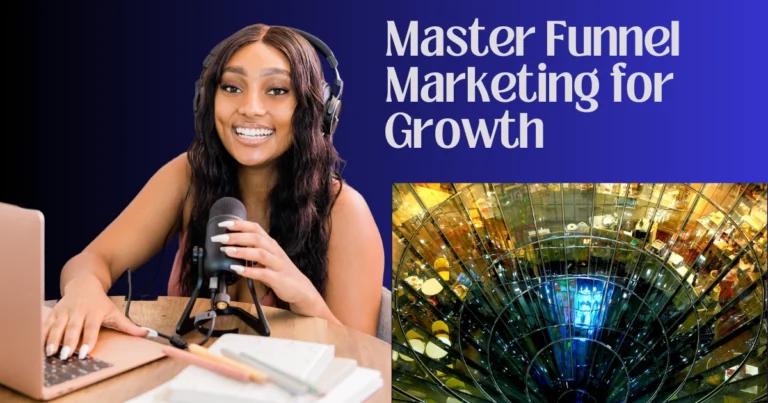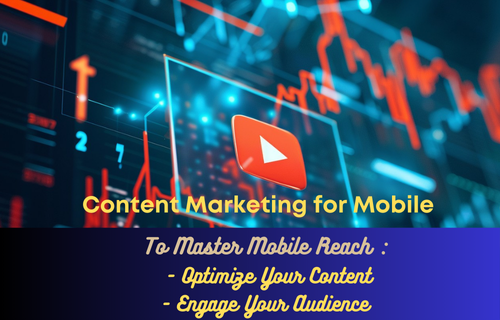Maximizing Content Success: The Role of Mobile Data Analytics in Marketing

Mobile data analytics has become a vital component in today’s digital marketing landscape. As mobile devices increasingly dominate global internet usage, understanding how audiences engage with content on these platforms is crucial. Effective use of mobile data analytics can help marketers create content that drives engagement, boosts user satisfaction, and generates a higher return on investment (ROI).
In this article, we’ll cover key metrics to monitor, discuss top analytics tools, explore strategies for data-driven content marketing, and dive into the importance of A/B testing and experimentation.
Table of Contents
Understanding Mobile Data Analytics
Mobile data analytics is the process of collecting, analyzing, and interpreting data generated from user interactions on mobile devices. It enables marketers to gain insights into user behavior, preferences, and engagement trends, which are critical for creating impactful content strategies..
How It Works
Analytics tools collect various data points, such as app launches, click patterns, time spent on content, and navigation paths. By analyzing this data, marketers can identify high-performing content and optimize user journeys for better engagement.
Table 1: Types of Data Collected in Mobile Analytics

Why It’s Important for Marketers
- Boosting Engagement: By understanding which content resonates, marketers can tailor strategies to maximize user interest.
- Enhancing User Experience (UX): Data-driven insights enable content optimization for smoother, more engaging experiences.
- Increasing Conversions: Tracking how users interact helps marketers refine their content to drive higher conversion rates.
Key Metrics in Mobile Data Analytics
Monitoring the right metrics is essential to understanding content performance and making informed marketing decisions. Below are some critical metrics that every content marketer should track.
Traffic and Engagement Metrics
- Unique Visitors: The number of distinct users who visit your website or app. This metric indicates your content’s reach and helps gauge the size of your audience.
- Page Views: Measures how often pages are viewed. It provides insights into which content attracts the most interest.
- Bounce Rate: The percentage of visitors who leave after viewing only one page. A high bounce rate often points to issues with content relevance or site design.
Behavioral Metrics
- Session Duration: Tracks how long users stay on your site or app. Longer sessions often indicate that the content is engaging.
- Screen Flow: Maps how users navigate through your app, showing drop-off points and areas for improvement.
- Heatmaps: Visualizes where users click or interact most. This helps in optimizing content layout and identifying areas that draw the most attention.
Conversion Metrics
- Conversion Rate: The percentage of users who complete a desired action, such as signing up or making a purchase. It’s a key indicator of content effectiveness.
- Customer Lifetime Value (CLV): Estimates the total revenue a customer will generate over their lifetime. It helps in making strategic marketing investment decisions.
- Attribution Models: Analyze which marketing touchpoints drive conversions, helping to allocate resources efficiently.

Top Tools for Mobile Data Analytics
Using the right analytics tools can make a significant difference in how effectively you interpret data and refine your marketing strategy. Here are some widely used mobile app analytics tools:
Google Analytics
Google Analytics provides a comprehensive overview of web and app traffic. It offers insights into where users come from, their behavior on your site, and which content is most engaging.
- Key Features: Audience segmentation, real-time data, and detailed traffic sources.
- Use Case: Ideal for tracking website performance and understanding user demographics.
Mixpanel
Mixpanel focuses on event-based analytics, making it perfect for monitoring user engagement and retention. It shows how users interact with different features over time.
- Key Features: Cohort analysis, funnel reports, and user journey tracking.
- Use Case: Useful for SaaS companies and mobile apps looking to improve feature engagement.
Flurry Analytics
Flurry Analytics, part of Yahoo, is a free tool for app performance tracking. It monitors session frequency, user retention, and user demographics, offering valuable insights for app developers and marketers.
- Key Features: User session tracking, event analysis, and retention metrics.
- Use Case: Best suited for mobile app analytics.
Amplitude
Amplitude is a robust product analytics tool that provides deep insights into user behavior. It features cohort analysis to understand what drives user engagement and retention over time.
- Key Features: Behavioral analysis, real-time data, and cross-platform tracking.
- Use Case: Ideal for companies needing detailed product analytics.
Pros and Cons of Each Tool
| Tool | Pros | Cons |
|---|---|---|
| Google Analytics | Free, user-friendly, detailed traffic reports | Limited capabilities for app-specific analysis |
| Mixpanel | Real-time insights, detailed event tracking | Can be costly for large enterprises |
| Flurry Analytics | Excellent for mobile app analytics, no cost involved | Fewer integrations compared to other tools |
| Amplitude | Comprehensive behavioral insights, easy to use | Learning curve for non-experts |
How to Choose the Right Tool
Selecting an appropriate tool depends on your business needs, budget, and the complexity of your mobile presence. For instance, startups may benefit from free options like Flurry, while enterprises with more extensive data needs might find Amplitude more suitable.
Case Study: A retail app that used Amplitude to understand and boost user engagement, leading to a 20% increase in customer retention.
Data-Driven Content Marketing Strategy
Leveraging data-driven insights is essential for building a successful content marketing strategy. Here’s how to use mobile data analytics to optimize your efforts:
Understanding Audience Behavior
Analyze metrics like page views, session duration, and user flow to see what content performs best. This helps tailor content that matches your audience’s interests and keeps them engaged.
Personalization and Segmentation
Use data to segment your audience based on behavior, demographics, or past interactions. Personalized content is more likely to resonate, improving engagement and conversion rates.
Reviewing Content Performance
Continuously monitor the success of your content. Identify which topics or formats drive the most engagement and adjust your content calendar to focus on high-impact areas.
A/B Testing and Optimization
Run A/B tests on elements like headlines, images, or CTAs. Use the results to determine which variations perform better and refine your content accordingly.
A/B Testing and Experimentation
A/B testing is a strategic approach to content optimization, allowing marketers to test different elements and see which version yields better results.
How It Works
Divide your audience into two groups and show each group a different version of the content. Measure which version performs better based on your chosen metrics, such as click-through rates or conversions.
Elements to Experiment With
- Headlines: Test variations to find out which captures the most attention.
- Images: Experiment with different visuals to determine what resonates with your audience.
- CTAs: Compare various call-to-action phrases or button designs to see which drives more conversions.
The Benefits of Continuous Experimentation
Experimentation keeps your content strategy fresh and responsive to audience behavior. It also minimizes the risk of content fatigue, ensuring your messaging remains effective.
Measuring and Improving ROI
Setting Clear KPIs
Defining clear, measurable goals is crucial. For example, track app downloads, engagement rates, or content-driven conversions to measure success.
Understanding Attribution Models
Attribution models determine which touchpoints contribute most to conversions. Options include first-touch, last-touch, or multi-touch models, each offering unique insights.
Optimizing Resource Allocation
Analyze which channels provide the highest ROI and allocate resources accordingly. For example, if video content drives more conversions than blog posts, shift resources to video production.
Continuous Optimization
Improving ROI is an ongoing process. Use insights from data to make incremental improvements to your content strategy.
Case Study: How a software company doubled its conversion rate by continuously refining content and marketing strategies based on data insights.
Challenges in Mobile Data Analytics and How to Overcome Them
Data Privacy and Security
Ensuring compliance with data protection regulations like GDPR and CCPA is vital. Collect only the necessary data, anonymize sensitive information, and provide clear privacy options.
Steps to Ensure Compliance
- Transparency: Clearly communicate how user data is collected and used.
- User Consent: Make opting in and out easy and transparent.
- Data Security: Implement robust security measures, like data encryption, to safeguard information.
Managing Data Overload
Marketers often struggle with too much data and not knowing which metrics to prioritize. Focus on KPIs that align with your content marketing goals, and use dashboards to simplify data interpretation.
Integration Challenges
Combining data from various platforms can be complex. Use integrated analytics tools or data warehouses to streamline the process.
Case Study Example: A global brand that overcame data fragmentation by centralizing data in a warehouse, leading to improved marketing efficiency.
Future Trends in Mobile Data Analytics for Content Marketing
AI and Machine Learning
AI is revolutionizing how data is analyzed, automating complex processes, and predicting user behavior. Machine learning models help personalize content at scale and optimize campaigns.
Machine learning algorithms can analyze massive datasets quickly, identifying patterns and providing actionable insights that would be impossible to discern manually. For content marketing, this means serving personalized recommendations in real-time and optimizing content strategies continuously based on user feedback.
Practical Applications of AI in Mobile Analytics
- Personalized Content Delivery: AI can customize content based on user behavior and preferences, enhancing engagement and boosting conversions. For instance, a news app might use AI to curate articles that match a user’s reading history.
- Automated Insights: Machine learning models can generate insights automatically, such as identifying peak engagement times or predicting which content formats will perform best.
- Sentiment Analysis: AI can analyze social media comments and user feedback to gauge sentiment around your brand or content, helping to adjust strategies accordingly.
Example Insight: An online retail app that used AI-driven product recommendations saw a 30% increase in sales due to better-targeted suggestions.
Predictive Analytics
Predictive analytics leverages historical data to forecast future user behavior. For marketers, this means being proactive rather than reactive, as content strategies can be refined in anticipation of trends.
Benefits of Predictive Analytics
- Content Strategy Forecasting: By analyzing past content performance, predictive models can suggest which topics and formats will likely succeed.
- Audience Segmentation: Predictive models can identify high-value audience segments, allowing marketers to tailor their content for maximum impact.
- Enhanced Campaign Planning: Knowing what content will resonate in the future helps in resource planning and optimizing content calendars.
Voice Search and Conversational Interfaces
Voice search technology continues to grow, and marketers must adapt their content strategies accordingly. Users are increasingly using voice commands to search for information, making it essential to optimize content for conversational queries.
Optimizing for Voice Search
- Use Natural Language: Incorporate long-tail, conversational keywords in your content. People tend to use more natural phrases in voice searches compared to typed searches.
- Answer Common Questions: Structure content to address frequently asked questions directly, improving the chances of appearing in voice search results.
- Focus on Local SEO: Many voice searches are location-based, so optimizing content for local SEO can boost visibility.
Evolving User Expectations
As technology advances, so do user expectations. People now expect seamless, personalized, and fast content experiences. Keeping up with these expectations is crucial for long-term success in content marketing.
How to Stay Ahead of User Expectations
- Constant Testing and Adaptation: Regularly experiment with new content formats, technologies, and engagement strategies.
- Leverage Emerging Tech: Explore technologies like augmented reality (AR) and virtual reality (VR) for creating immersive content experiences.
- Focus on Accessibility: Ensure your content is accessible to all users, including those with disabilities, to broaden your audience reach and enhance user satisfaction.
Future Outlook: As voice search, AI, and predictive analytics become mainstream, marketers who adapt quickly will be well-positioned to captivate their audiences and outperform competitors.
Call to Action: Start using data insights today and watch your content marketing strategy thrive!
Conclusion
Mobile data analytics is a game-changer in content marketing. By understanding and applying key metrics, using the right tools, and continuously experimenting, you can create more engaging and effective content. Data-driven strategies not only enhance user experience but also lead to higher conversions and improved ROI.
Embrace the power of mobile data analytics to transform your content marketing efforts and stay ahead in the digital landscape.







One Comment
Comments are closed.